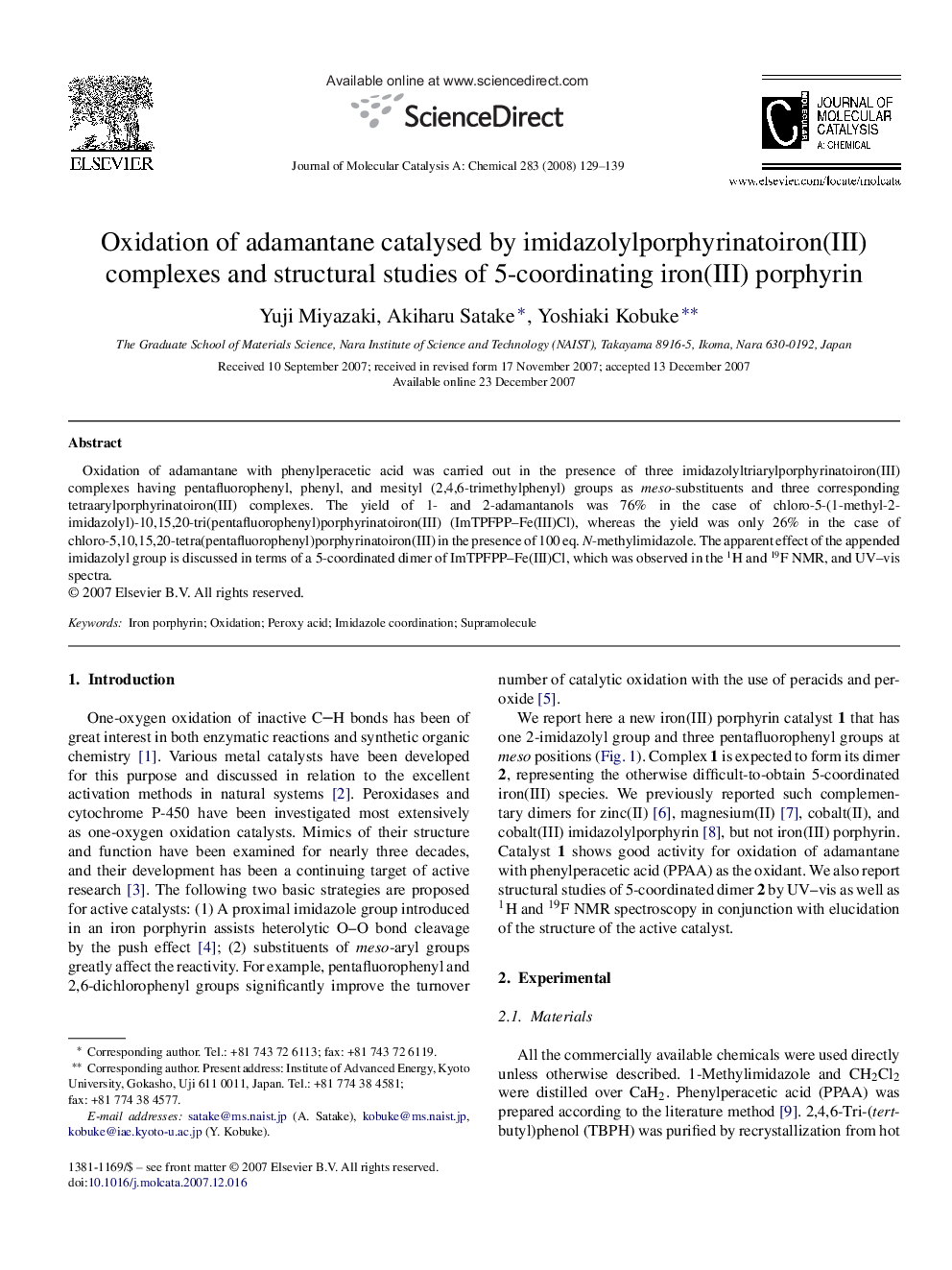| Article ID | Journal | Published Year | Pages | File Type |
|---|---|---|---|---|
| 68073 | Journal of Molecular Catalysis A: Chemical | 2008 | 11 Pages |
Oxidation of adamantane with phenylperacetic acid was carried out in the presence of three imidazolyltriarylporphyrinatoiron(III) complexes having pentafluorophenyl, phenyl, and mesityl (2,4,6-trimethylphenyl) groups as meso-substituents and three corresponding tetraarylporphyrinatoiron(III) complexes. The yield of 1- and 2-adamantanols was 76% in the case of chloro-5-(1-methyl-2-imidazolyl)-10,15,20-tri(pentafluorophenyl)porphyrinatoiron(III) (ImTPFPP–Fe(III)Cl), whereas the yield was only 26% in the case of chloro-5,10,15,20-tetra(pentafluorophenyl)porphyrinatoiron(III) in the presence of 100 eq. N-methylimidazole. The apparent effect of the appended imidazolyl group is discussed in terms of a 5-coordinated dimer of ImTPFPP–Fe(III)Cl, which was observed in the 1H and 19F NMR, and UV–vis spectra.
Graphical abstractOxidation of adamantane with peroxyphenylacetic acid in the presence of chloro-5-(1-methyl-2-imidazolyl)-10,15,20-tri(pentafluorophenyl)porphyrinatoiron(III) (ImTPFPP–Fe(III)Cl) gave adamantanols in 76% yield, whereas the yield was only 26% in the case of chloro-5,10,15,20-tetra(pentafluorophenyl)porphyrinatoiron(III). The apparent effect of the appended imidazolyl group is discussed in terms of a 5-coordinated dimer of ImTPFPP–Fe(III)Cl, which was observed in the 1H and 19F NMR, and UV–vis spectra.Figure optionsDownload full-size imageDownload as PowerPoint slide
